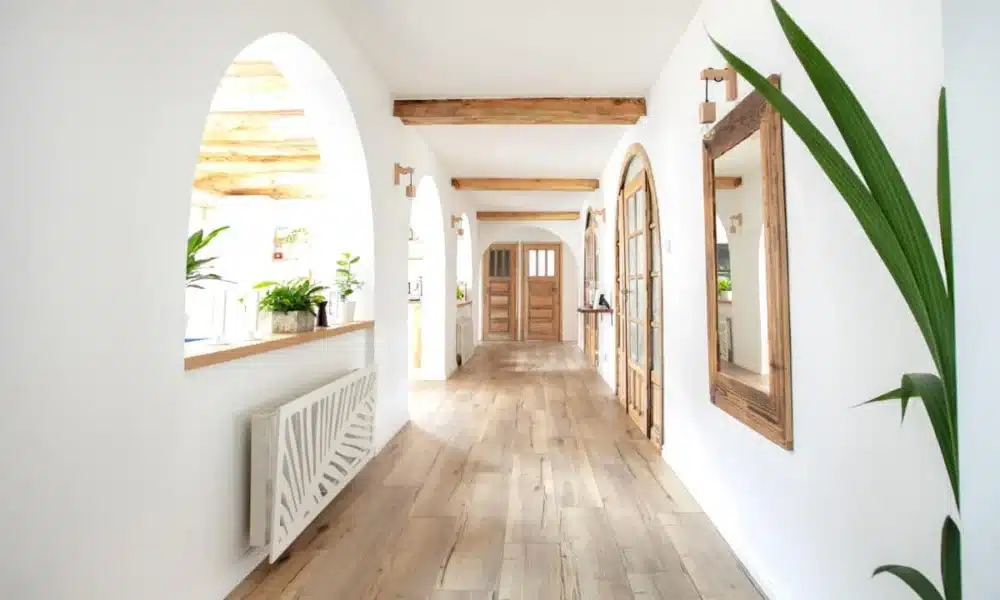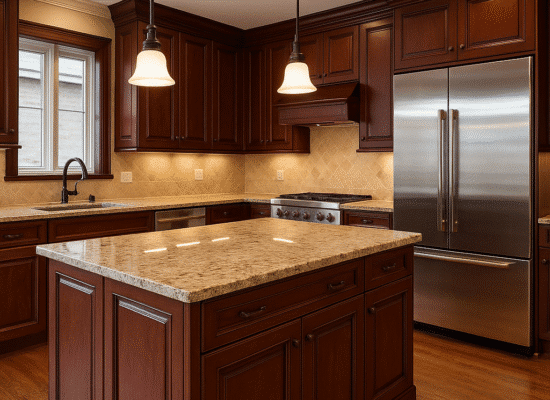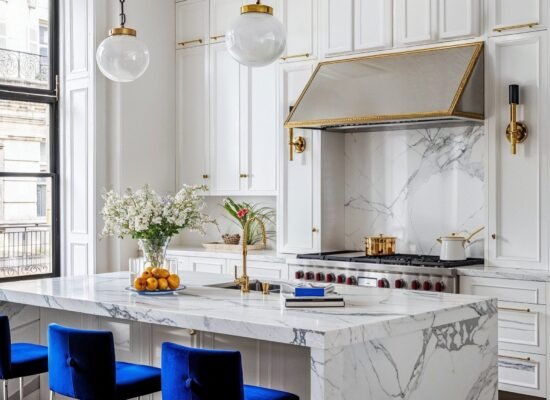Why Hallway Design Fundamentals Matters: Setting the Tone for Your Home
Often overlooked hallway design is the silent ambassador of your home. It’s the first space guests encounter, and it subtly whispers what lies beyond. Whether it’s a grand foyer or a modest corridor, the hallway sets the tone, offering a preview of your style, taste, and the warmth your home exudes.
Table Of Content
- Why Hallway Design Fundamentals Matters: Setting the Tone for Your Home
- Basics: What Are Hallway Design Fundamentals?
- Choosing the Right Color Palette for Your Hallway
- Maximizing Space in Narrow Hallways
- Open vs. Closed Hallways: Which Is Right for You?
- Lighting Your Hallway: Bright Ideas for a Welcoming Space
- Flooring Options That Elevate Your Hallway’s Look
- Wall Décor Essentials: From Art to Accent Walls
- Incorporating Mirrors: Tricks to Make Your Hallway Feel Spacious
- The Power of Statement Rugs in Hallway Design
- Storage Solutions: Stylish and Functional Ideas for Your Hallway
- Furniture Placement: How to Avoid a Cluttered Look
- Creating a Focal Point: Tips for Hallway Centerpieces
- Greenery and Plants: Bringing Life to Your Hallway
- Mixing and Matching Textures for Visual Interest
- Personal Touches: Showcasing Your Style in the Hallway
- Hallway Design on a Budget: Affordable Tips and Tricks
- Seasonal Décor: Keeping Your Hallway Fresh Year-Round
- Common Hallway Design Mistakes and How to Avoid Them
- Final Touches: Small Details That Make a Big Impact
- Conclusion: Transforming Your Hallway into a Stylish Pathway
A well-designed hallway not only impresses but also makes a house feel like a cohesive, welcoming environment. It’s not just a pass-through; it’s a space with purpose.
Basics: What Are Hallway Design Fundamentals?
House hallway design fundamentals encompass the essential elements that bring a space together—balance, flow, and functionality. These fundamentals are about creating a seamless connection between rooms while ensuring that the hallway design stands as an aesthetic entity in its own right.
It involves understanding scale, proportion, and the interplay between light, color, and texture. The goal is to create a passage that is both practical and visually pleasing.
Choosing the Right Color Palette for Your Hallway
Color is transformative, especially in hallways where natural light might be scarce. Light, neutral tones can make a narrow space appear more expansive, while bold colors can create a striking, dramatic entrance.
Consider the mood you want to set—soft blues and greens for a calming effect or rich, deep hues for an air of sophistication. Don’t forget the ceiling and trim; these areas can offer opportunities to add depth and character with contrasting or complementary colors.
Maximizing Space in Narrow Hallways
Narrow hallways can be challenging, but with a few strategic choices, they can become cozy, inviting spaces. Opt for slim, streamlined furniture that doesn’t obstruct the flow. Wall-mounted shelves or floating consoles can provide storage without encroaching on the floor space.
Vertical storage solutions draw the eye upward, creating an illusion of height. Mirrors are your best friend in narrow hallways, reflecting light and giving the impression of a larger area.
Open vs. Closed Hallways: Which Is Right for You?
The choice between an open or closed hallway depends on the architecture of your home and your personal preferences. Open hallways, often part of an open-plan design, create a sense of continuity and spaciousness.
They allow light to flow freely and can make a home feel airy and expansive. On the other hand, closed hallways offer privacy and a clear distinction between different areas of the house. They can be more intimate, providing a moment of transition as you move from one space to another.
Lighting Your Hallway: Bright Ideas for a Welcoming Space
Lighting is crucial in hallway design, as it can dramatically affect the space’s ambiance. Layered lighting—combining ambient, task, and accent lighting—creates a versatile and inviting atmosphere. Recessed lights or track lighting can brighten the entire hallway, while wall sconces add warmth and character.
For a touch of elegance, consider a statement chandelier or pendant light. Motion-sensor lights are also a practical addition, especially in areas where you might pass through with your hands full.
Flooring Options That Elevate Your Hallway’s Look
Flooring in a hallway must balance durability with style. Hardwood floors are a timeless choice, offering warmth and natural beauty. If you prefer a softer feel underfoot, consider carpets or runners, which also add color and texture.
Tiles, particularly those with interesting patterns or textures, can bring a modern or traditional touch, depending on your style. For a sustainable option, bamboo or cork flooring offers eco-friendly elegance.
Wall Décor Essentials: From Art to Accent Walls
Walls are a blank canvas waiting to be transformed. In a hallway, they offer an opportunity to introduce personality and flair—artworks, whether a single statement piece or a gallery wall, can inject color and interest.
Accent walls, using either paint or wallpaper, create a focal point that draws the eye and adds depth to the space. Consider textures like shiplap or exposed brick for an added layer of visual intrigue.
Incorporating Mirrors: Tricks to Make Your Hallway Feel Spacious
Mirrors are a designer’s secret weapon, especially in hallways. They reflect light, making the space feel brighter and more open. A large hallway design mirror at the end of a hallway can create the illusion of extended space, while a series of smaller mirrors can add a decorative touch.
Consider the frame style, as it can contribute to the overall aesthetic—sleek and modern for a contemporary look or ornate and vintage for a classic appeal.
The Power of Statement Rugs in Hallway Design
A statement rug can tie a hallway design together, adding color, texture, and a sense of warmth. It also serves as a practical element, protecting the floor and guiding the flow of traffic. When choosing a rug, consider the size—ensure it fits the length of the hallway without overwhelming the space.
Patterns and bold colors can make a striking impact, while neutral tones offer understated elegance.
Storage Solutions: Stylish and Functional Ideas for Your Hallway
Hallways often serve as transitional spaces where storage is necessary. Stylish and functional solutions can prevent clutter from taking over. Consider built-in shelving, which can be customized to fit your space and storage needs.
Floating shelves provide storage without sacrificing floor space, while baskets and bins can add texture and help keep things organized. For larger hallways, a bench with storage underneath can be both practical and inviting.
Furniture Placement: How to Avoid a Cluttered Look
Furniture in a hallway should enhance the space, not clutter it. The key is to choose pieces that are proportionate to the hallway’s size and to avoid overfilling the area.
A narrow console table can provide a surface for decorative items without obstructing the flow. If you have the space, a small chair or bench can add a welcoming touch. Keep the layout simple and ensure there’s plenty of room to move through the hallway comfortably.
Creating a Focal Point: Tips for Hallway Centerpieces
A focal point in a hallway draws the eye and creates a sense of purpose. It could be a piece of art, a unique light fixture, or even a small table with a carefully curated arrangement of décor. The key is to keep it simple and impactful.
In longer hallways, consider creating multiple focal points to guide the eye along the space.
Greenery and Plants: Bringing Life to Your Hallway
Plants bring a fresh, natural element to any space, and hallways are no exception. They add color, texture, and a sense of calm. Choose plants that thrive in low-light conditions if your hallway lacks natural light.
Hanging plants can add interest without taking up floor space, while larger potted plants can serve as statement pieces. Even a small arrangement of succulents on a console table can add life to the space.
Mixing and Matching Textures for Visual Interest
Texture is a powerful tool in hallway design, adding depth and richness to a space. In a hallway, mixing and matching textures can create visual interest and a sense of coziness. Consider combining smooth surfaces like polished wood or metal with softer elements like a plush rug or upholstered bench.
Textured wall treatments, such as beadboard or patterned wallpaper, can add dimension and make the space feel more dynamic.
Personal Touches: Showcasing Your Style in the Hallway
Your hallway is a reflection of your personal style, so don’t be afraid to add elements that make it uniquely yours. Family photos, travel souvenirs, or artwork that speaks to you can turn a hallway into a gallery of memories.
Personal touches add warmth and character, making the space feel lived-in and loved. Consider how these items fit with the overall design to ensure a cohesive look.
Hallway Design on a Budget: Affordable Tips and Tricks
Transforming your hallway doesn’t have to break the bank. With a few affordable tips and tricks, you can create a stylish space on a budget. Start with a fresh coat of paint—sometimes, a simple color change can make a big difference.
Shop for second-hand furniture or DIY your own pieces. Repurpose items from other areas of your home to give your hallway a new look. Small investments in lighting, rugs, or art can also have a significant impact without costing a fortune.
Seasonal Décor: Keeping Your Hallway Fresh Year-Round
Changing your hallway décor with the seasons is a fun way to keep the space feeling fresh and inviting. In the spring, consider adding floral arrangements or pastel accents. For summer, bright colors and light fabrics can bring a breezy feel.
Autumn calls for warm tones and cozy textures, while winter might invite festive touches or rich, deep colors. Seasonal changes don’t have to be drastic—small swaps can keep your hallway in tune with the time of year.
Common Hallway Design Mistakes and How to Avoid Them
Even with the best intentions, it’s easy to make mistakes in hallway design. One common error is overcrowding the space with too much furniture or décor, which can make the hallway feel cramped. Another is neglecting the importance of lighting, leaving the space dark and uninviting.
Failing to consider the flow between rooms can also disrupt the harmony of your home. By keeping these pitfalls in mind, you can design a hallway that is both functional and beautiful.
Final Touches: Small Details That Make a Big Impact
The final touches in hallway design are what truly bring the space together. These small details can have a big impact on the overall look and feel of the hallway. Consider adding decorative hardware to doors or cabinets, choosing unique light switch covers, or incorporating small sculptures or vases.
Even the addition of a subtle scent through candles or diffusers can enhance the ambiance of the hallway, making it a space that delights all the senses.
Conclusion: Transforming Your Hallway into a Stylish Pathway
A well-designed hallway is more than just a passage—it’s a stylish pathway that enhances the flow and feel of your entire home.













No Comment! Be the first one.